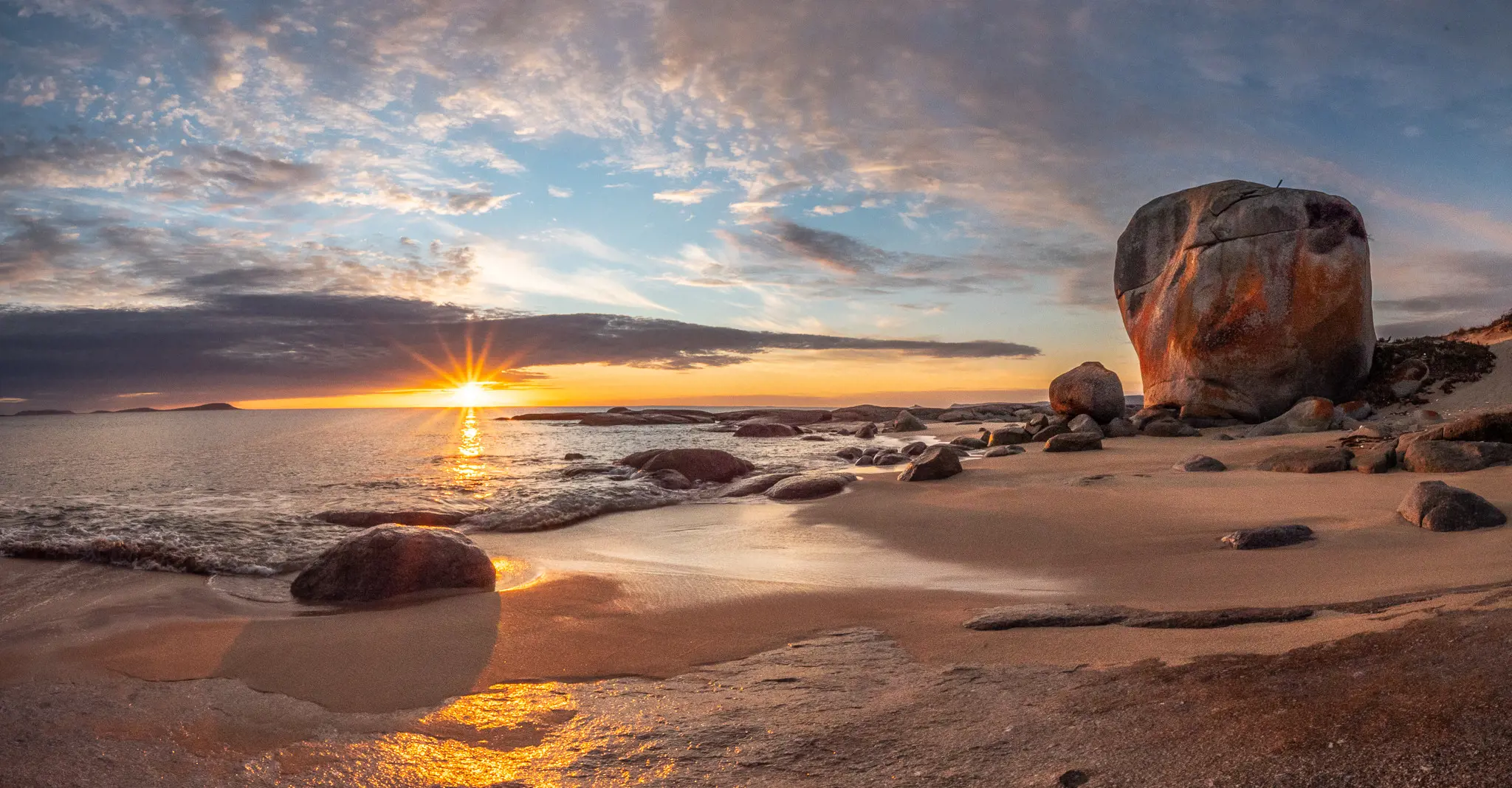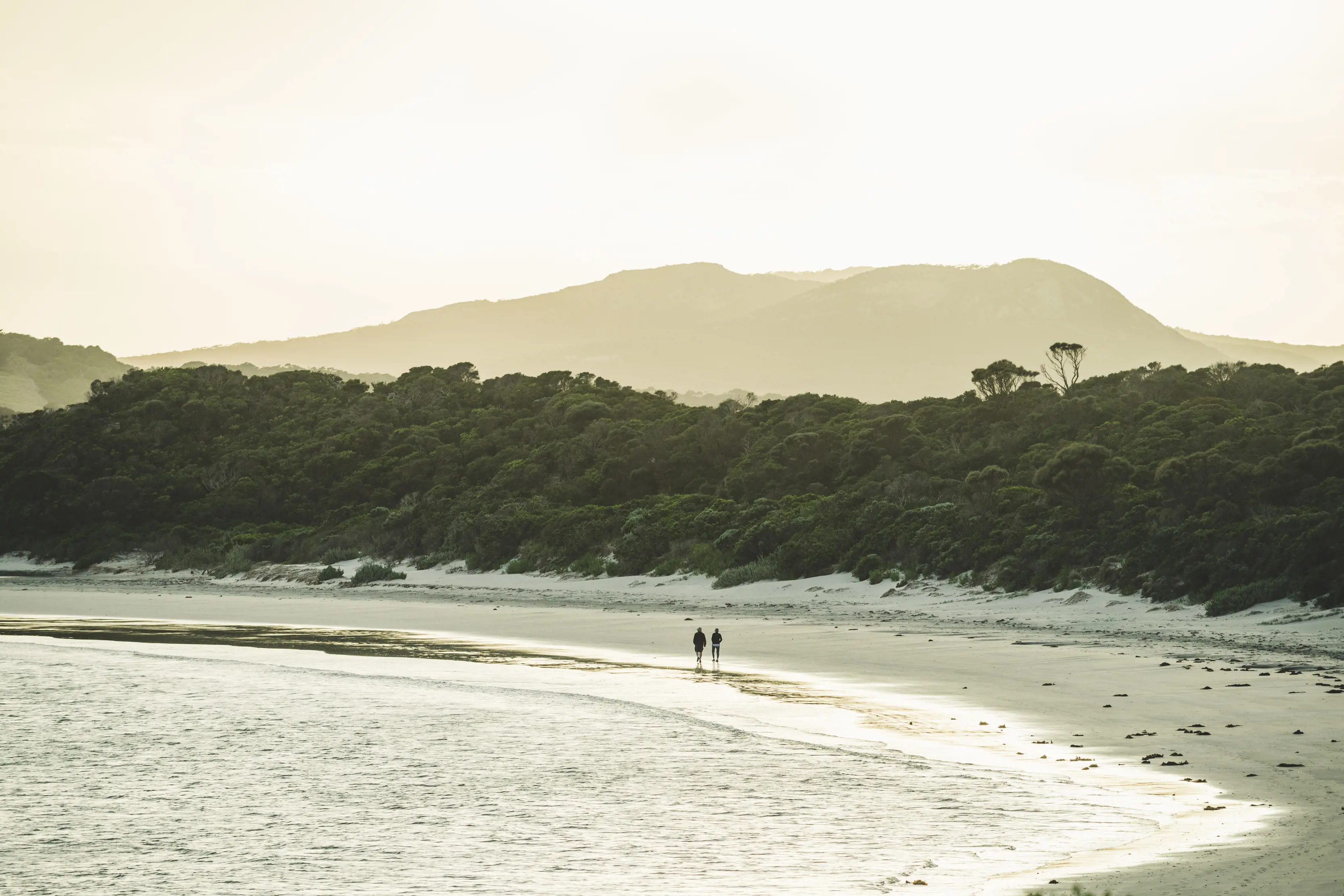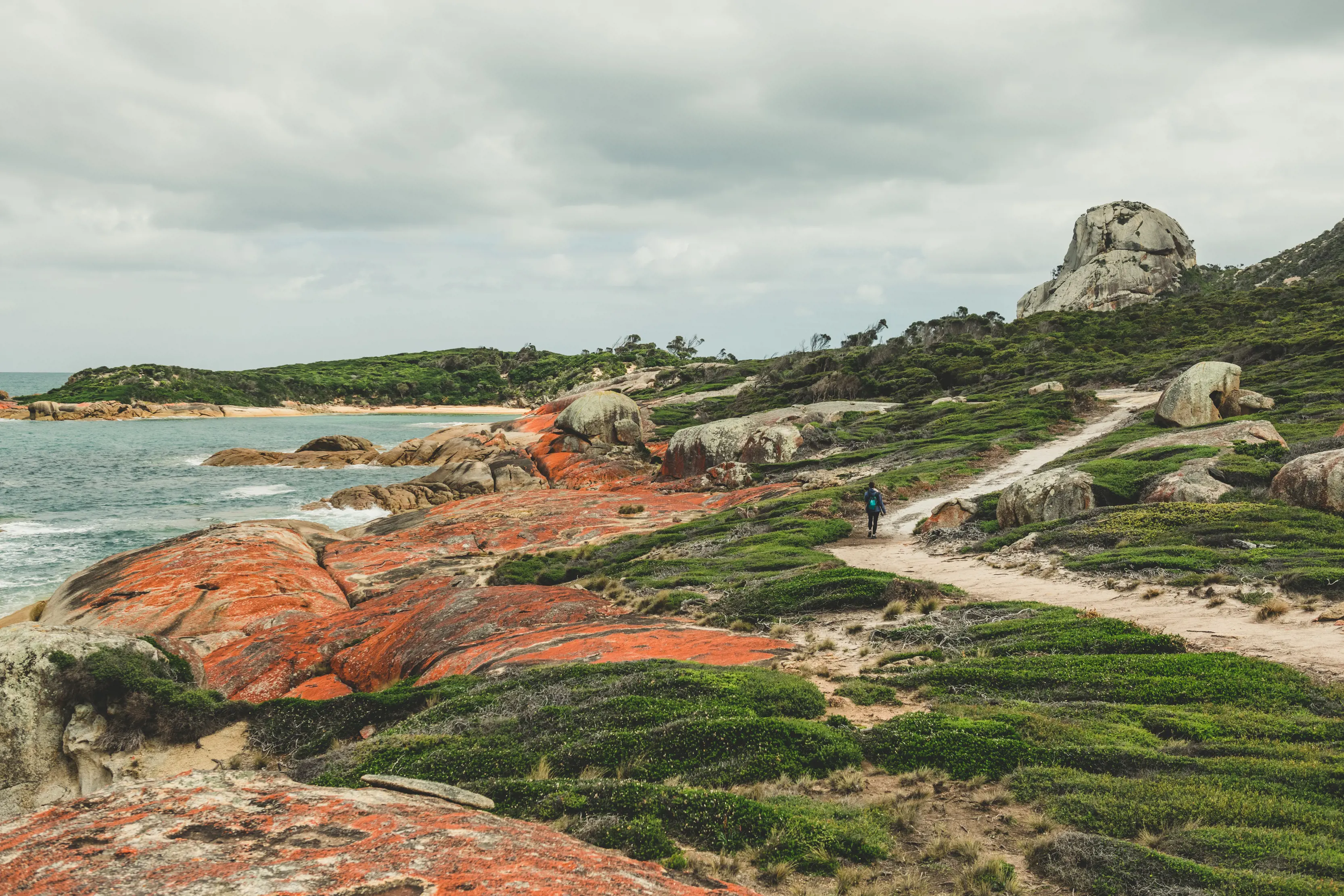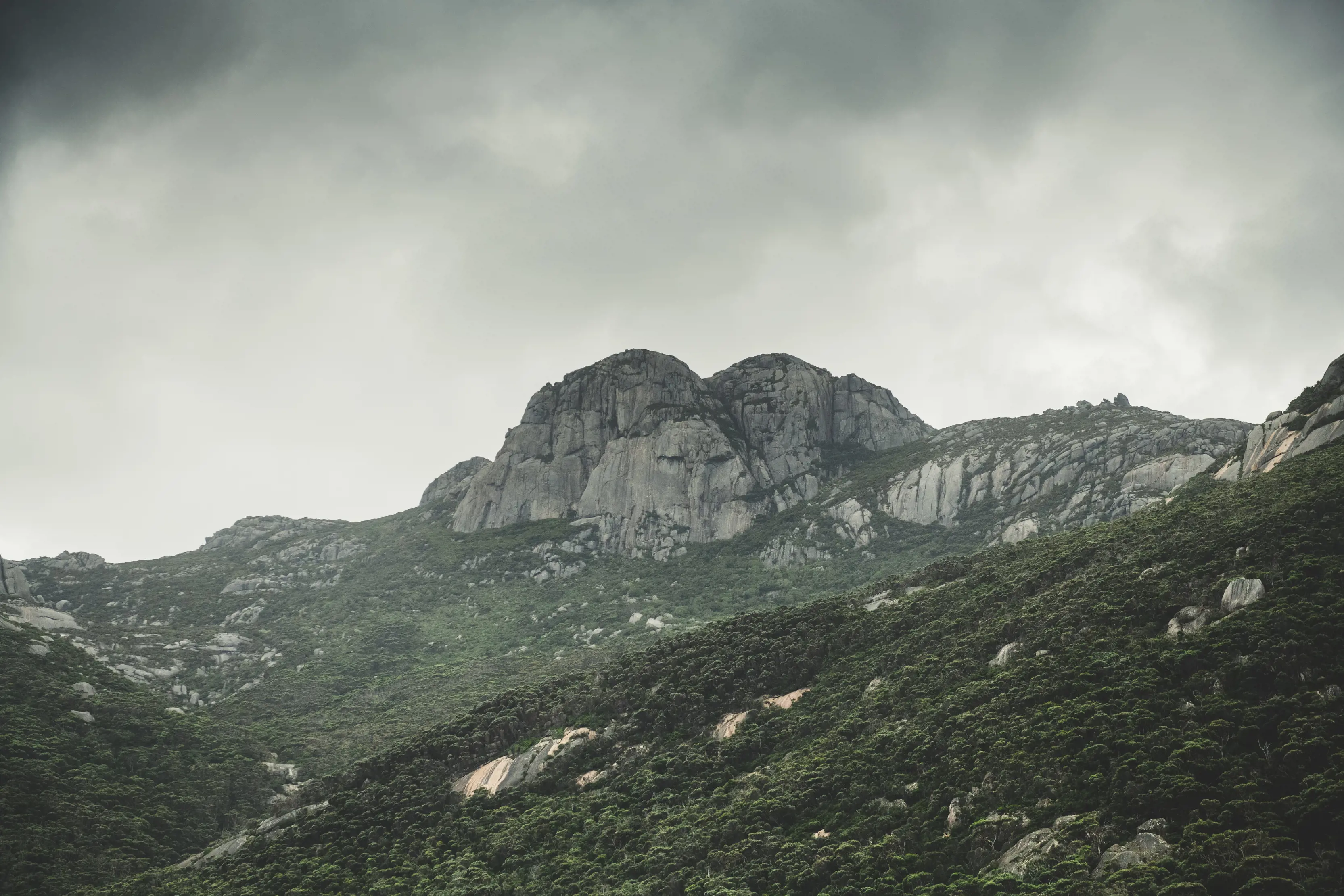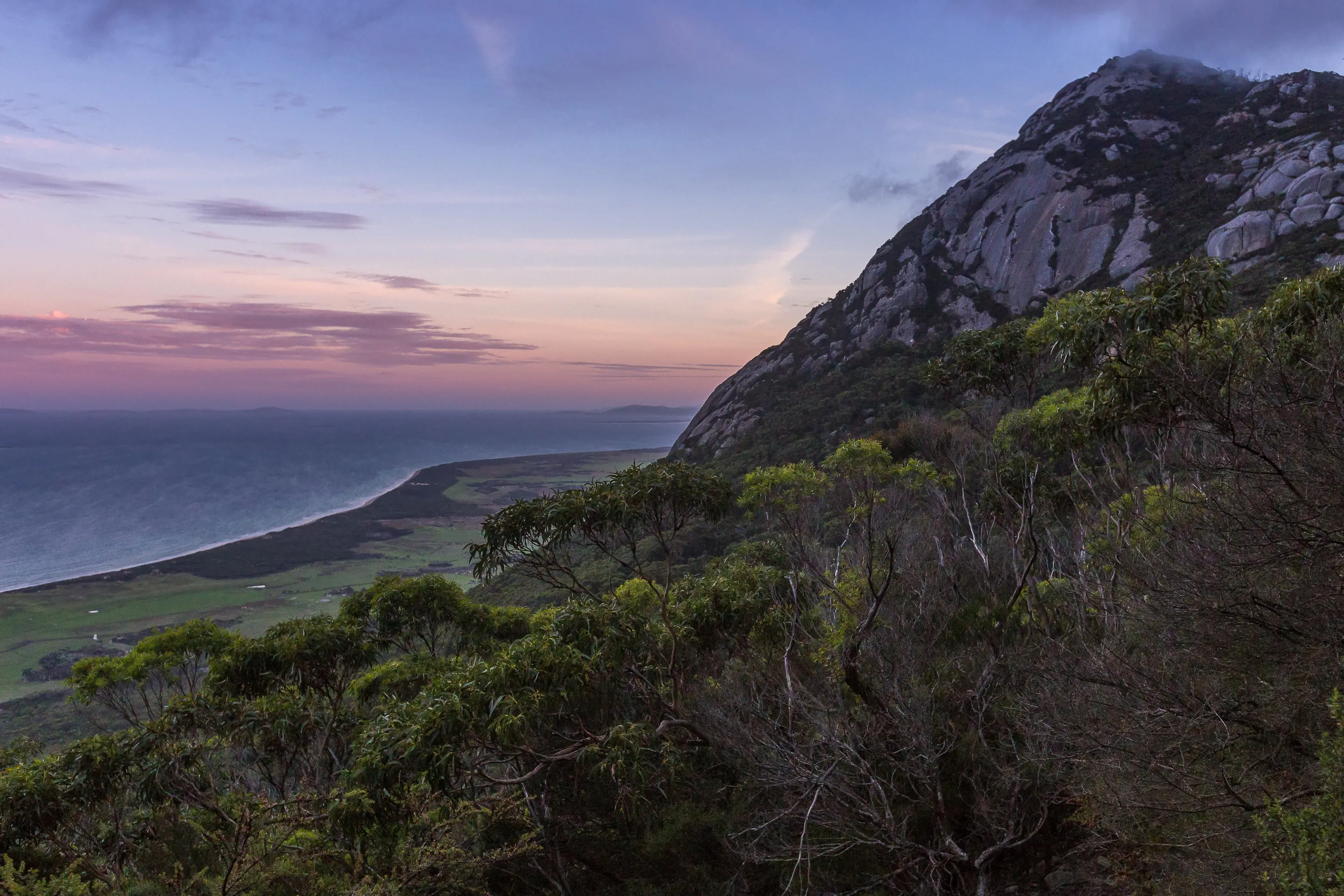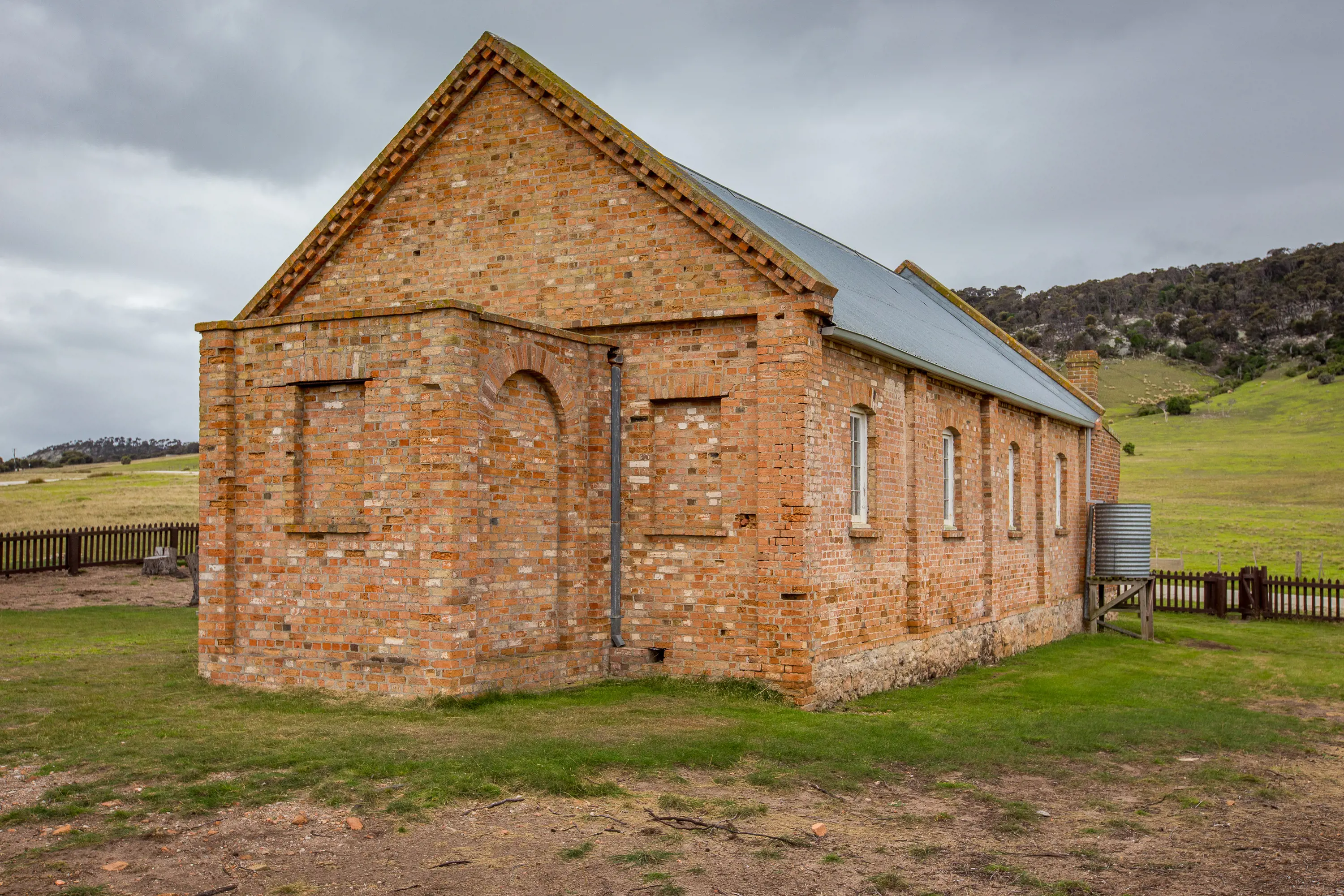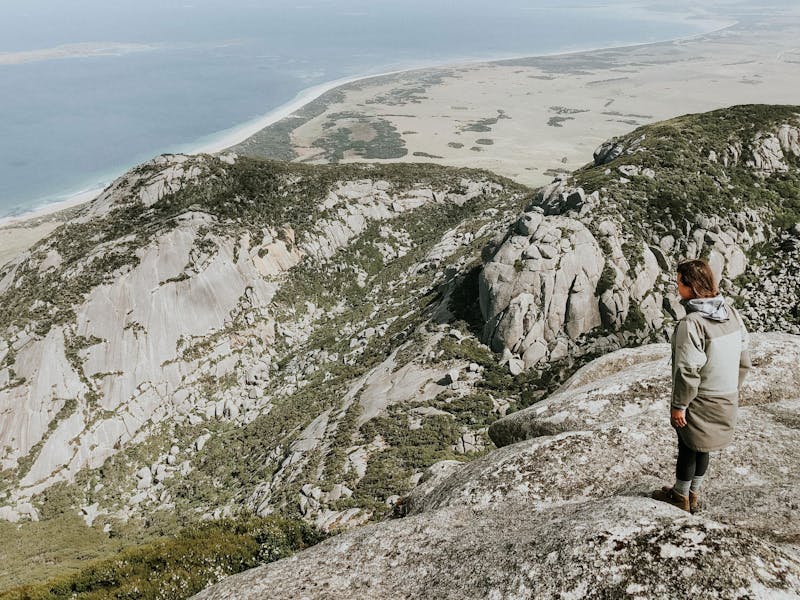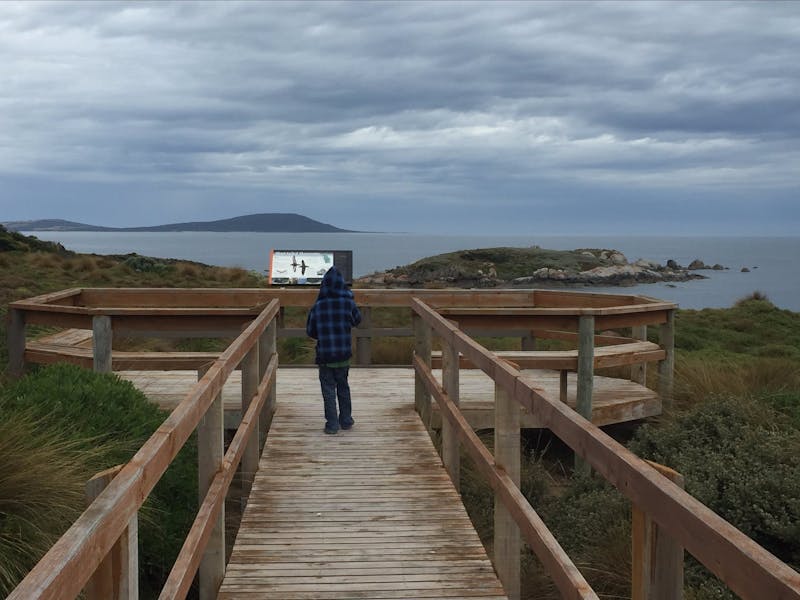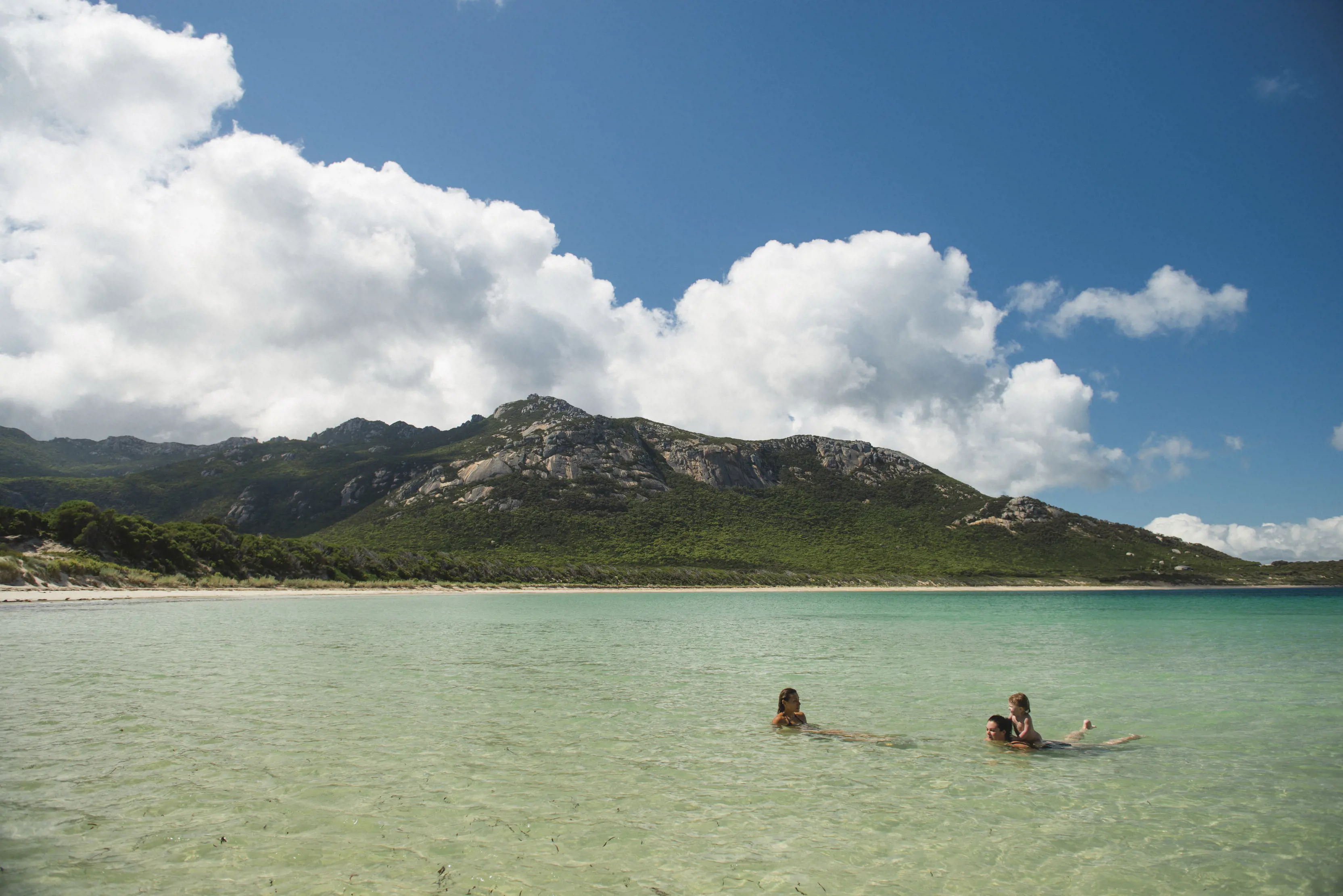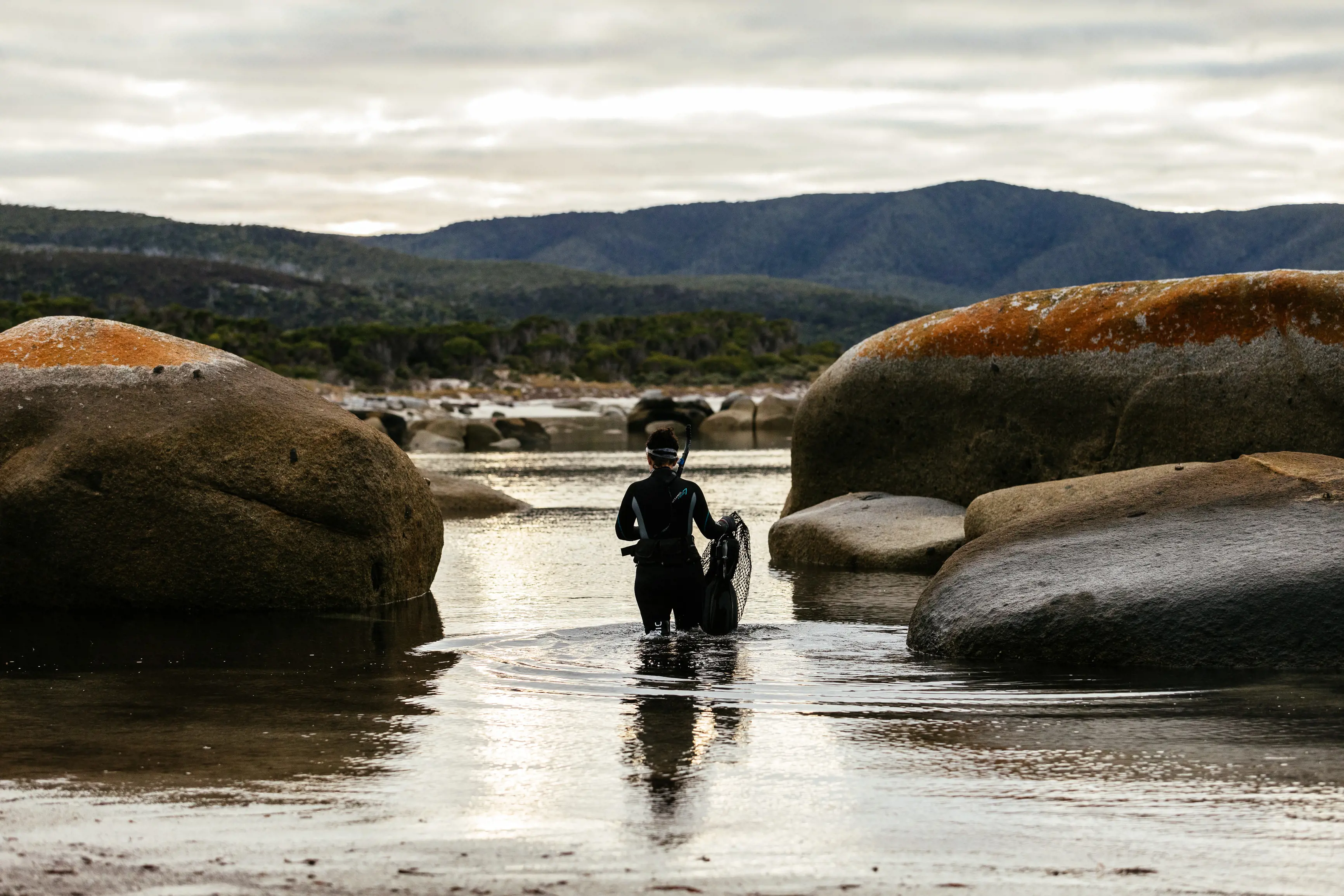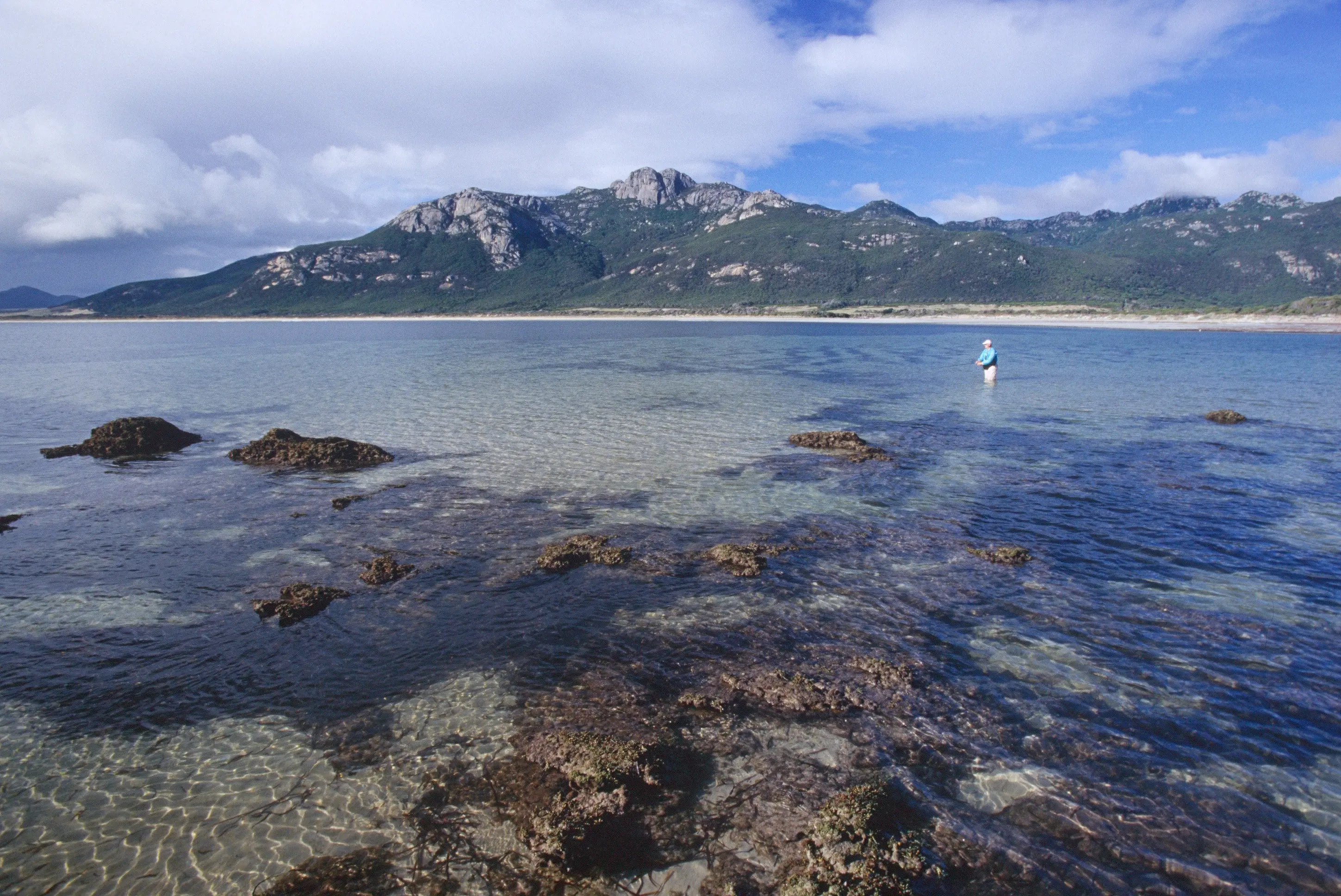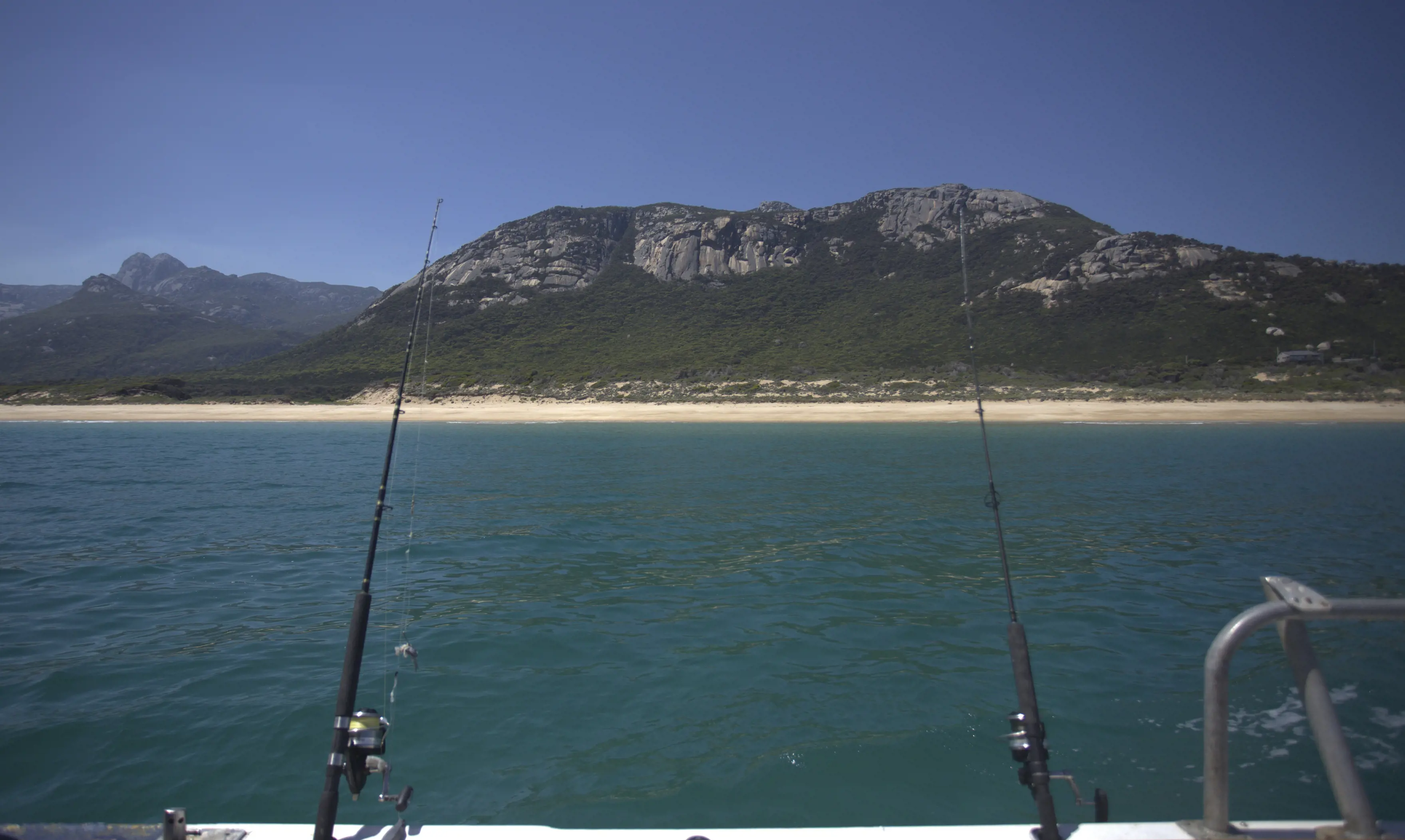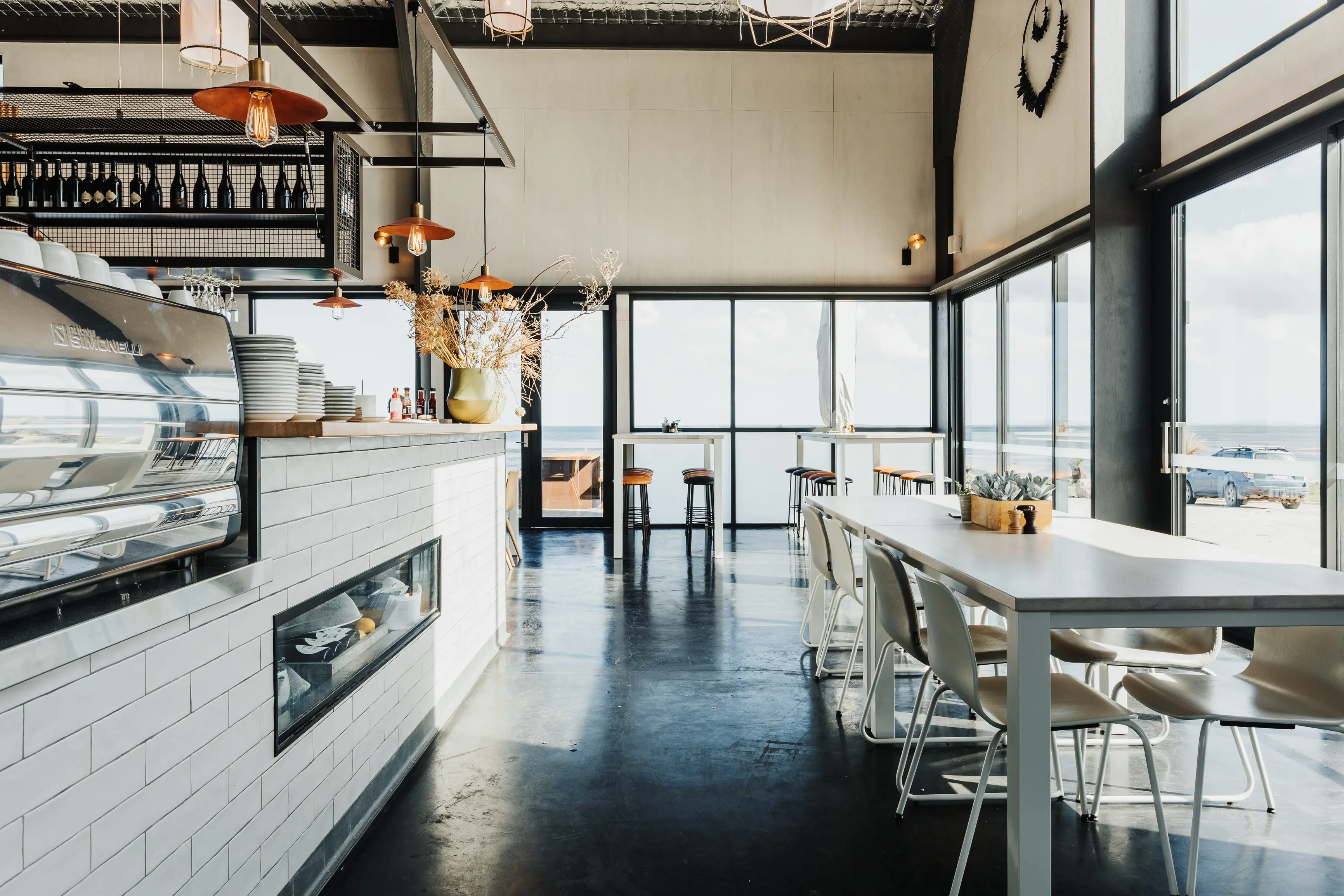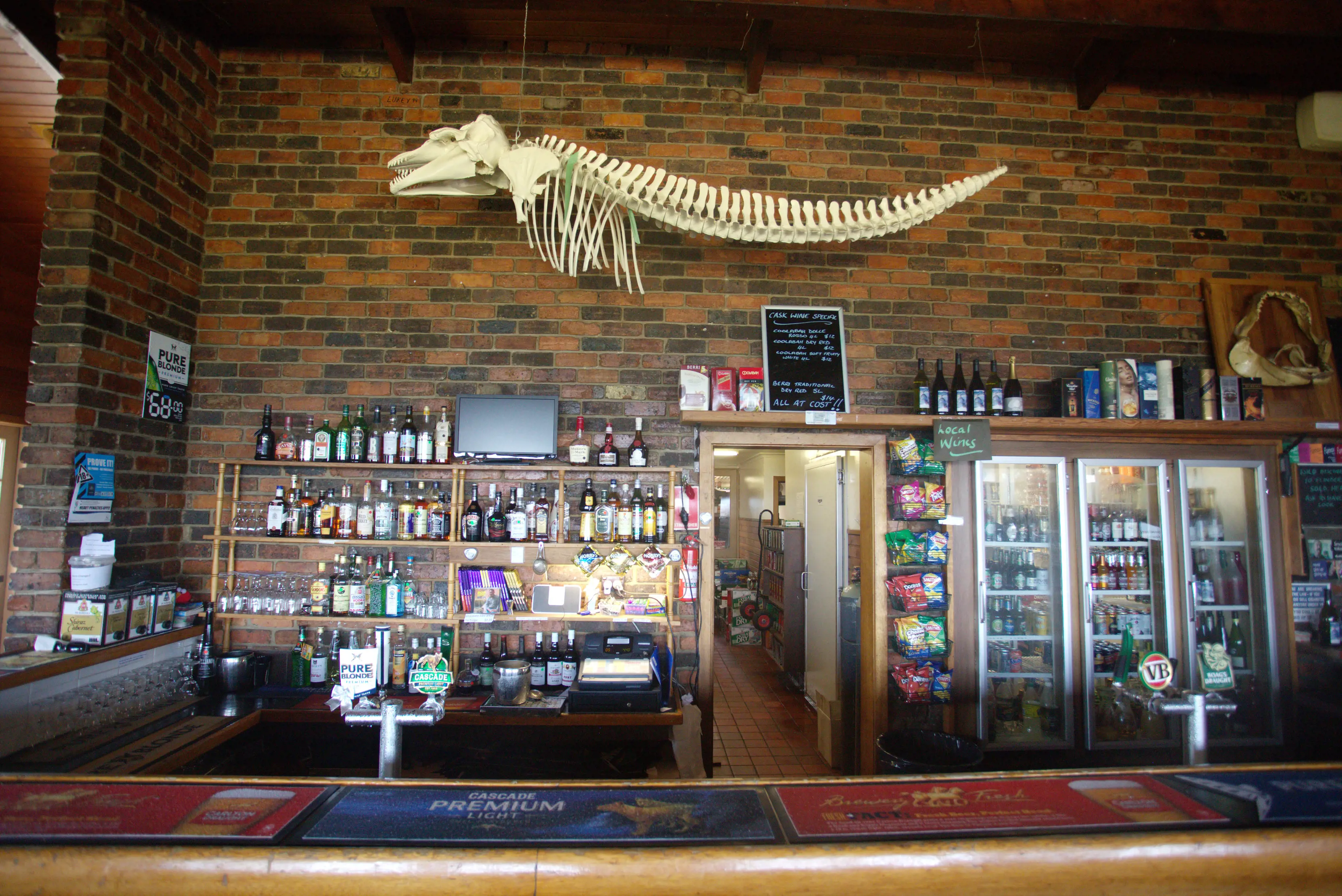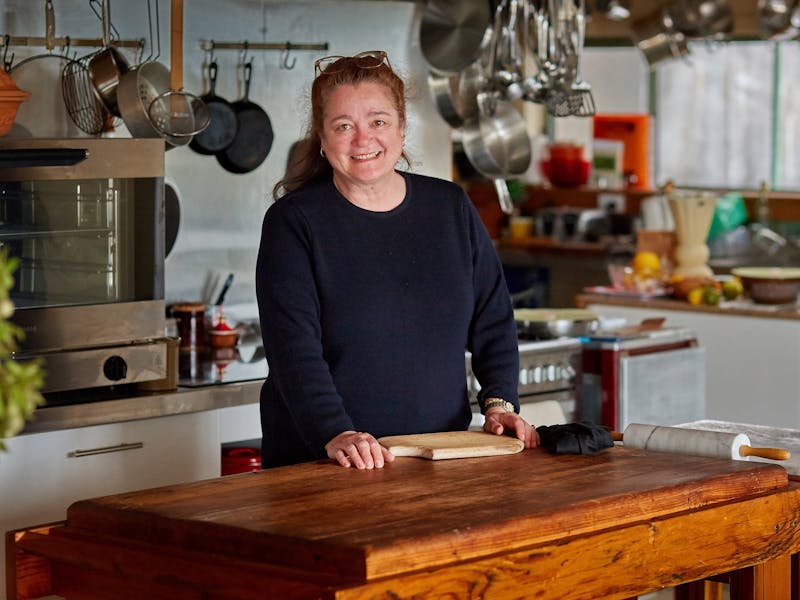
Flinders Island rises from Bass Strait in a spectacular line of beaches and mountains.
The rugged west coast features white sandy beaches encased by granite headlands. At the southern end, emerging direct from the sea, are the granite-plated Strzelecki Peaks, the island’s highest mountains, forming the heart of Strzelecki National Park. The mountains taper away in the east into a landscape of lagoons and wetlands.
The largest island in the Furneaux Group off Tasmania’s north-east tip, Flinders has a population of just 800 people, concentrated in the towns of Whitemark and Lady Barron, along with other smaller settlements such as Emita, Killiecrankie and far-northern Palana. Settle into island time, find a beach to yourself, and let Flinders weave its natural magic.
Don't miss
- Stand atop the summit of the Strzelecki Peaks.
- Reflect on the consequences of colonisation at Wybalenna.
- Explore the coastline at Trousers Point.
- Unearth your own “diamond” at Killiecrankie.
- Dine with a sunset ocean view at Flinders Wharf.
Getting here
Flinders Island is about 55km off the north-east coast of Tasmania. Sharp Airlines operates flights between Flinders Island and Launceston, Hobart and Melbourne.
Getting around
Car hire on the island is available through Flinders Island Car Rentals and Flinders Island Cabin Park and Car Hire. There is no public transport.

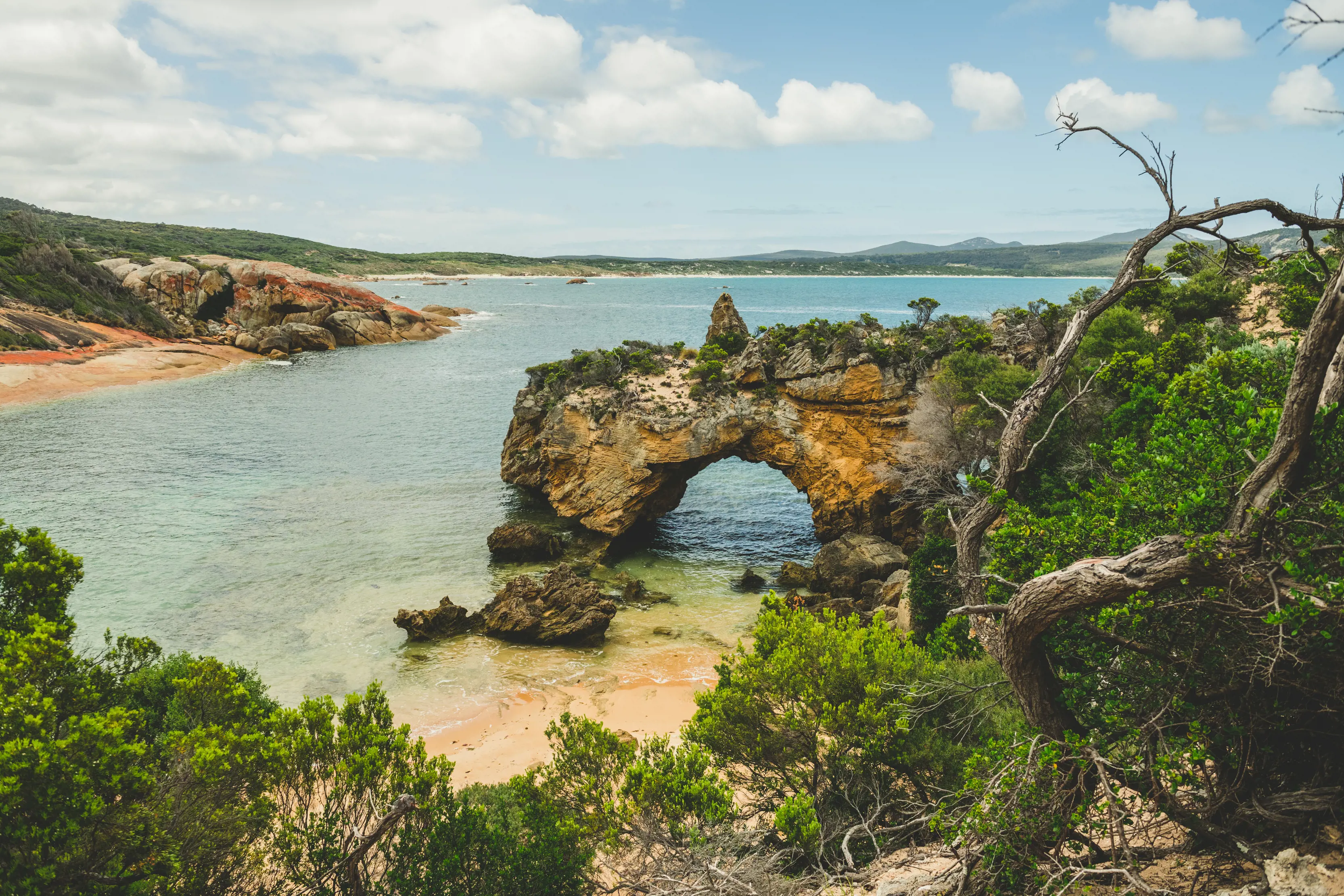
Things to do
Walk the coast
There are more than 120 beaches lining the island, with some of its best walks trailing along the shores. The loop around Trousers Point and the beach-hop to towering Castle Rock are both among Tasmania’s 60 Great Short Walks. Another rewarding waterside walk follows the rocky coast from Killiecrankie to The Dock, past a sea arch at Stackys Bight and the towering Old Man’s Head boulder.
Wine and whisky
Visit the cellar door at Unavale Vineyard, one of three small vineyards on the island, owned and run by former Spring Vale winemaker Barry Kooji. Attached to The Flinders Wharf restaurant in Whitemark, Furneaux Distillery produces local gin and peated whisky using island peat. Distillery tours are available by appointment.
Killiecrankie diamonds
Search for semi-precious topaz – known colloquially as Killiecrankie diamonds – on Killiecrankie Bay. These “diamonds” occur in a wide range of colours, typically clear, ice blue and pink gold, and are found by combing the beaches at low tide and by digging and sieving the beach below the high-water mark. Hire sieves and shovels from Killiecrankie Enterprises and head for Diamond Gully or Mines Creek.
Climb the mountain
The island is rippled with mountains, the tallest of which are the 756m Strzelecki Peaks, rising directly above Trousers Point. A steep climb through varied forest types leads to the peaks’ summit for views over much of the island as well as Cape Barren Island and distant glimpses (on a fine day) of the Tasmanian mainland. In the island’s north, there are climbs to Mount Killiecrankie and Mount Boyes, or you can simply drive to the top of Mount Tanner for a more easily earned upstairs view.
Wybalenna
The island’s most sombre site is Wybalenna, where Aboriginal people from the Tasmanian mainland were exiled in the 1830s and 1840s. Most died from disease while on the island before they were transferred to Oyster Cove in Tasmania’s south in 1847. The chapel and a small cemetery remain.
Furneaux Museum
Delve into island history at this museum in Emita, where displays include a replica of a muttonbirding shed, the original Whitemark police cells, and an anchor from the Sydney Cove, one of Australia’s first shipwrecks, which ran aground off nearby Preservation Island. The Aboriginal Room details the story of Wybalenna and features a collection of traditional shell necklaces.
Take to the water
Magnificent white beaches line the island’s coast – from Palana in the far north to Yellow Beach in the south – and it takes little effort to find one all to yourself. Swim in the clear sea, snorkel around the rocks at Trousers Point and The Dock, or head offshore to fish or explore outer islands with Flinders Island Adventures.
Kayaking
Paddle the shores of the island on a week-long trip with Roaring 40s Kayaking, weaving along rocky shores, gliding into empty bays and visiting nearby islands.
Eating and drinking
The Flinders Wharf
Peering over Bass Strait, on the site of Whitemark’s former wharf storage shed, The Flinders Wharf is a stylish restaurant-distillery-apiarist mixing island produce and meat with the day’s fresh ocean catch.
Mountain Seas Lodge
Perched on the lower slopes of the Strzelecki Peaks, this in-house lodge restaurant looks across Trousers Point to Mount Chappell Island, with the menu focusing on island farms, fish and wines.
Cate Cooks
Beneath a large portrait of Queen Victoria, this tiny cafe does good things to start the day – fine coffee, breakfast rolls and home-baked cakes and slices. There are also providore shelves of local produce and products.
Pubs
Join the locals for dinner or a drink at the Furneaux Tavern in Lady Barron and the century-old Interstate Hotel in Whitemark. The Corner Cafe is tucked into a corner of the Interstate and is open every morning.
Supermarkets
The island has two supermarkets. Walkers Supermarket in Whitemark is open every day except Sunday, and stocks condiments and (on Wednesday) sourdough from island producer Condimental. The Lady Barron Store is open every day.
Places to stay
Wondering where to stay? Explore rejuvenating retreats and luxury accommodation on Flinders Island.
